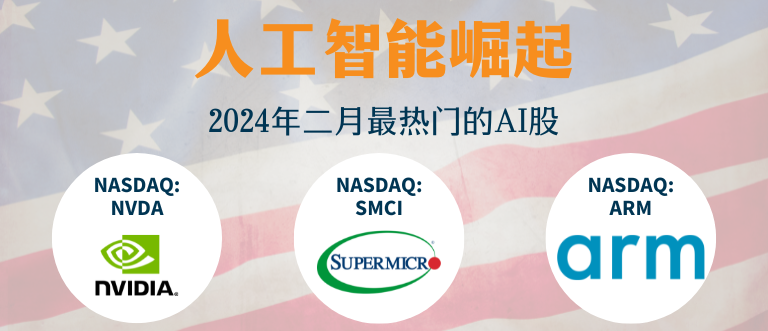Margin Requirement
Table of Contents
Margin Requirement
The word “margin requirement” is probably not foreign to you if you’re an experienced trader. While the vast majority of traders use their own money, others take out loans specifically to trade. Margin trading is the practice of buying financial assets with borrowed money. Borrowed money is used to purchase stocks, which serve as security for the loan. The goal of taking out a loan to purchase stocks is to increase the amount of cash available for investment, which should lead to larger earnings.
Under margin trading, an investor can buy more securities, sell them short, etc., by using the assets already in their portfolio as collateral. Setting up a margin trading account has several advantages, but investors should think carefully about it first.
What is Margin Requirement?
The current value of the collateral being loaned is less than the amount of the loan itself, and this difference is known as the margin requirement. In times of low demand or deflation, the central bank can encourage commercial banks to lend more money by lowering their margins. This boosts the money supply and helps close the deflationary gap.
Understanding Margin Requirement
The quantity of equity an investor possesses in their brokerage account is called margin. What we mean when we say “to buy on margin” is to acquire shares using borrowed funds from a broker. You’ll need a margin account instead of a regular brokerage account to do this. An investor can buy more securities using a margin account than they could with their existing account balance since the broker loans them the money.
When you buy stocks on margin, you are essentially taking out a loan against the cash or assets you currently have in your account. Interest payments are due every month for the collateralised loan. Due to the investor’s use of borrowed funds would amplify the impact of both gains and losses. When the expected rate of return on the investment is more than the interest paid on the loan, margin investing might be a good choice.
To illustrate, let’s say your margin requirement is 60% for your margin account. If you wish to buy $10,000 worth of stocks, you’d need to put $6,000 down as a margin and borrow the remaining $5,000 from your broker.
Working of Margin Requirement
To buy stocks on margin, one must borrow funds from a broker. Consider it a loan from your brokerage, if you will. With margin trading, you may purchase more shares of stock than you would otherwise be able to.
An account that allows you to trade on margin is necessary. In a traditional bank account, you would trade with the funds available in the account. You can buy assets using a margin account loan and use the money you deposit as collateral. With this, you may borrow as much as half of an investment’s price. That means you may purchase assets worth up to $10,000 with a $5,000 deposit.
The broker will take a cut of the interest you pay back on the loan you take out. You will be able to retain the remaining funds after paying off your loan with the sale of your stocks.
Regulated by the Financial Industry Regulatory Authority (FINRA) and the Securities and Exchange Commission (SEC), margin trading is subject to stringent requirements on minimum deposits, maximum borrowing amounts, and minimum account balances.
Benefits of Margin Requirement
The following are a few advantages of margin trading:
- Margins allow investors to profit from short-term price changes even if they don’t have enough cash on hand.
- Securities other than futures can be leveraged.
- Margin trading allows investors to increase their profits on investment.
- With this feature, investors may use the assets in their demat accounts or investment portfolios as security.
Example of Margin Requirement
For example, suppose you want to open a margin account and put $10,000 in it. You now have the purchasing power of $20,000, thanks to your 50% down payment. Then, you’ll have $15,000 to spend on stocks (at $5,000 a share). You have not used your margin and have sufficient cash on hand to pay for this transaction. If you want to invest in assets worth more than $10,000, you’ll have to start taking out loans.
A margin account’s purchasing power fluctuates daily in response to price movements in the marginal assets held therein.
Conclusion
Any trading activity must have a margin requirement. This guarantees that traders will have the financial means to repay their brokers. On the other hand, they may use leverage to their advantage and make the most of any profitable agreements. Just keep in mind that leverage might increase your potential gains as well as your losses.
The magnitude of the margin required could vary among countries and exchanges. Find out what the platform’s rules are before you start making trades. In any other case, your money might be lost, or your account could be frozen.
Frequently Asked Questions
Margin trading is when a trader puts more money on the line than they can afford to earn a higher return potentially. The opportunity to buy equities at a price that is just below their intrinsic worth is available to investors here. Investors can buy stocks through these trading activities because brokers lend them the money. Investors might settle the margin when they rebalance their stock market positions.
The margin trading capability is integrated into the current trading account and associated Demat account, rather than being a separate account. Customers of the MTF service can pledge their stock or cash as collateral for the margin amount.
When it comes to the financial markets, margin trading is a powerful instrument that magnifies wins and losses. There are dangers involved, such as interest expenses, regulatory limits, and the possibility of increased losses, but there are also prospects for increased earnings.
When you trade on margin, you borrow money from a brokerage so you may trade with more capital. Margin trading requires investors to put up cash as security for a loan and then make interest payments on top of that.
A margin call is a request from a broker for an investor to contribute more funds or securities to their account to meet the minimum equity value required by the maintenance requirement.
Related Terms
- Adjusted distributed income
- International securities exchanges
- Pledged Asset
- Stochastic Oscillator
- Prepayment risk
- Homemade leverage
- Prime bank investments
- ESG
- Capitulation
- Shareholder service fees
- Insurable Interest
- Minority Interest
- Passive Investing
- Market cycle
- Progressive tax
- Adjusted distributed income
- International securities exchanges
- Pledged Asset
- Stochastic Oscillator
- Prepayment risk
- Homemade leverage
- Prime bank investments
- ESG
- Capitulation
- Shareholder service fees
- Insurable Interest
- Minority Interest
- Passive Investing
- Market cycle
- Progressive tax
- Correlation
- NFT
- Carbon credits
- Hyperinflation
- Hostile takeover
- Travel insurance
- Money market
- Dividend investing
- Digital Assets
- Coupon yield
- Counterparty
- Sharpe ratio
- Alpha and beta
- Investment advisory
- Wealth management
- Variable annuity
- Asset management
- Value of Land
- Investment Policy
- Investment Horizon
- Forward Contracts
- Equity Hedging
- Encumbrance
- Money Market Instruments
- Share Market
- Opening price
- Transfer of Shares
- Alternative investments
- Lumpsum
- Derivatives market
- Operating assets
- Hypothecation
- Accumulated dividend
- Assets under management
- Endowment
- Return on investment
- Investments
- Acceleration clause
- Heat maps
- Lock-in period
- Tranches
- Stock Keeping Unit
- Real Estate Investment Trusts
- Prospectus
- Turnover
- Tangible assets
- Preference Shares
- Open-ended investment company
- Standard deviation
- Independent financial adviser
- ESG investing
- Earnest Money
- Primary market
- Leveraged Loan
- Transferring assets
- Shares
- Fixed annuity
- Underlying asset
- Quick asset
- Portfolio
- Mutual fund
- Xenocurrency
- Bitcoin Mining
- Option contract
- Depreciation
- Inflation
- Cryptocurrency
- Options
- Asset
- Reinvestment option
- Capital appreciation
- Style Box
- Top-down Investing
- Trail commission
- Unit holder
- Yield curve
- Rebalancing
- Vesting
- Private equity
- Bull Market
- Absolute Return
- Leaseback
- Impact investing
- Venture Capital
- Buy limit
- Asset stripper
- Volatility
- Investment objective
- Annuity
- Sustainable investing
- Face-amount certificate
- Lipper ratings
- Investment stewardship
- Average accounting return
- Asset class
- Active management
- Breakpoint
- Expense ratio
- Bear market
- Annualised rate of return
- Hedging
- Equity options
- Dollar-Cost Averaging (DCA)
- Due Diligence
- Contrarian Investor
Most Popular Terms
Other Terms
- Options expiry
- Settlement currency
- Federal funds rate
- Active Tranche
- Convertible Securities
- Synthetic ETF
- Physical ETF
- Initial Public Offering
- Buyback
- Secondary Sharing
- Bookrunner
- Notional amount
- Negative convexity
- Jumbo pools
- Inverse floater
- Forward Swap
- Underwriting risk
- Reinvestment risk
- Final Maturity Date
- Payment Date
- Secondary Market
- Mark-to-market
- Yield Pickup
- Subordinated Debt
- Trailing Stops
- Treasury Stock Method
- Bullet Bonds
- Basket Trade
- Contrarian Strategy
- Exchange Control
- Notional Value
- Relevant Cost
- Dow Theory
- Speculation
- Stub
- Trading Volume
- Going Long
- Pink sheet stocks
- Rand cost averaging
- Sustainable investment
- Stop-limit sell order
- Economic Bubble
- Ask Price
- Constant prepayment rate
- Covenants
- Stock symbol
- Companion tranche
- Synthetic replication
- Bourse
- Beneficiary
Know More about
Tools/Educational Resources
Markets Offered by POEMS
Read the Latest Market Journal

本文旨在为中级外汇交易者提供必要的信息和知识。它将涵盖我们上一篇文章 “五分钟看懂世界上最活跃的市场-外汇差价合约(FX CFD)...

解锁台湾股市的投资潜力!深入了解由强大的技术驱动型经济推动的股票市场,2023 年机械和电气设备将占出口的 69%。在政治稳定、投资者友好的法规和健全的法律框架下,探索台积电和富士康等全球顶级企业。台湾股市值得称赞的历史表现和在国际贸易中的的重要性使其更具吸引力。在这个科技实力雄厚、经济稳定、充满活力的股票市场中,抓住增长机遇!

了解外汇市场 外汇交易市场又称外汇市场,是一个买卖货币的全球性金融市场。它是全世界规模最大、流动性最强的金融市场,每日交易量超过 6 万亿美元。但外汇市场有一个重要却常被忽视的一点,就是它受交易心理的影响。在本文中,我们将探讨外汇市场的复杂性,还有把重点放在交易心理与传统交易策略共同发挥的关键作用...

五分钟看懂世界上最活跃的市场 -外汇差价合约(FX CFD)
外汇交易市场俗称外汇或外汇市场,是全球金融市场的支柱。它是世界上最活跃的市场,2022 年 4 月,全球交易额达到创纪录的每天 7.5 万亿美元[1] 。这个活跃的市场为交易者提供了利用货币价格波动赚取利润的机会。在本文中,我们将解释外汇市场的基本原理,助您了解其投资机制。 什么是外汇? 外汇市场是一个分散的全球市场,世界上所有货币都在这里进行交易...

随着通胀数据趋向 2% 的理想目标,人们普遍乐观地认为,在任何可能的降息之前,市场都不会受到不利影响。以下是美股市场2024年的一些重要事件,投资者在做出投资决策时可以参考留意。

根据《东南亚态势报告:2023》,失业和经济衰退是当前东南亚面临的主要挑战。各国采取了各种政策和措施以恢复经济,尽力摆脱新冠疫情的影响。尽管如此,越南在经济和社会方面展现出了令人满意的复苏迹象,经济增长逐季上升,成为世界经济的亮点之一。虽然全年GDP增速放缓至5.05%,低于政府6.5%的目标,但越南仍然是地区和世界经济增速较快的国家之一。






















